42 section 1.4 presenting scientific data answers
1.4 Presenting Scientific Data Scientists also exchange information through conversations, e-mails, and Web sites. Young scientists often present their research at science fairs, which we call poster sessions. Communicating Data 1.4 Presenting Scientific Data Peer review is a process in which scientists examine other scientists' work. represents the data of the research. For example, it is possible to determine the color of an individual's skin according to Fitzpatrick classification or quantify the number of times a person uses sunscreen during summer.1,2All the information collected during research is generically named "data." A set of individual data makes it
Section 1.4 Presenting Scientific Data (pages 22–25) This section describes how scientists organize and communicate data. Reading Strategy(page 22) Comparing and Contrasting After you read this section, compare the types of graphs by completing the table. For more information on this Reading Strategy, see the Reading and Study Skills in the ...
Section 1.4 presenting scientific data answers
Computer Science: An Overview: Global Edition (12th Edition) answers to Chapter 1 - Data Storage - Section 1.4 - Representing Information as Bit Patterns - Questions & Exercises - Page 52 8 including work step by step written by community members like you. Textbook Authors: Brookshaw, Glenn; Brylow, Dennis, ISBN-10: 1292061162, ISBN-13: 978-1-29206-116-0, Publisher: Pearson Higher Education Start studying Chapter 1.4 Presenting Scientific Data 📈. Learn vocabulary, terms, and more with flashcards, games, and other study tools. Section 1.4, selected answers Math 114 Discrete Mathematics D Joyce, Spring 2018 4. P(x;y) is \x has taken class y." Express the following in English. There are minor variants that you can give for each of these. Let's write Pxy rather than P(x;y) whenever we can to reduce parentheses. a. 9x9yPxy. Someone has taken some class. b. 9x8yPxy.
Section 1.4 presenting scientific data answers. 1-4 Tools and Procedures Most scientists use the metric system when collecting data. The metric system is a deci-mal system of measurement whose units are based on certain physical standards and are scaled on multiples of 10. A microscope is a device that produces magnified images of structures that are too small to see with the unaided eye ... Circle the letters of the relationships that are direct proportions. a. distance traveled versus time at a constant speed b. the mass of a substance versus its volume c. the time to travel a given distance versus average speed d. the number of fingers in your classroom versus the number of people. Answer Key for Section 1. Verbal Reasoning 25 Questions 1. A — In various parts of the world, civilizations that could not ... 23. C — presenting a possible explanation of a phenomenon 24. A — The pull theory is not universally accepted by scientists; B — The pull theory depends on one of water's physical ... 1 4. - - 1 - 18 - ... Name _____ Chapter 1 Class _____ Date _____ Science Skills Section 1.4 Presenting Scientific Data (pages 22-25) This section describes how scientists organize and communicate data. Reading Strategy (page 22) Comparing and Contrasting After you read this section, compare the types of graphs by completing the table.
ORA Laboratory Manual Volume III Section 4 Document Number: III-04 Revision #: 02 Revision Date: 08/13/2019 Title: Basic Statistics and Data Presentation Page 2 of 28 For the most current and ... Answer The first meaning of statistics refers to numerical facts, for example the statistics of a sport or the elections. The second one refers to a field of study. Statistics is a science where we collect, analyze, present and interpret data in order to be able to draw conclusions. Work Step by Step The second one refers to a field of study. Section 1.4 Presenting Scientific Data (pages 22-25) This section describes how scientists organize and communicate data. Reading Strategy(page 22) Comparing and Contrasting After you read this section, compare the types of graphs by completing the table. For more information on this Start studying 1.4 Presenting Scientific Data. Learn vocabulary, terms, and more with flashcards, games, and other study tools.
Question Number Answer Level 1 Head Reference for Answer Difficulty 1 C. What is an Information System? M 2 D What are Data, Information and Knowledge E 3 E What are Data, Information and Knowledge M 4 C What are Data, Information and Knowledge - What is Ethics E 5 Data What are Data, Information and Knowledge E 6 Information What are Data ... Circle the letters of tools that scientists use to organize their data. a. the Internet b. newspapers c. graphs 2. The simplest way to organize data is to present them in a(n) . Circle the correct answer. line graph bar graph data table 3. Circle the letter of the place on a line graph where the manipulated variable is generally plotted. a. the y-axis List three race car safety features brought about by the study of injury biomechanics: 1. ______six-point safety harnesses______________ 2. ______rigid safety cages or "tubs"______________ 3. ______energy absorbing "head surrounds" _____ breakaway parts and energy absorbing walls are also acceptable answers Science: Science Skills Chapter 1 Section 1.4 Presenting Scientific Data (Part 1) study guide by rsabolling includes 17 questions covering vocabulary, terms and more. Quizlet flashcards, activities and games help you improve your grades.
(e) State one advantage of presenting scientific data using a graph. 0 5 10 15 20 25 30 35 40 45 Solubility (g/100 ml) Temperature (°C) 2 3 1 2019J057C1E028S Science EV 2019J057C1ES.indd 4 19/10/2018 17:06
Section 1.4, selected answers Math 114 Discrete Mathematics D Joyce, Spring 2018 4. P(x;y) is \x has taken class y." Express the following in English. There are minor variants that you can give for each of these. Let's write Pxy rather than P(x;y) whenever we can to reduce parentheses. a. 9x9yPxy. Someone has taken some class. b. 9x8yPxy.
Start studying Chapter 1.4 Presenting Scientific Data 📈. Learn vocabulary, terms, and more with flashcards, games, and other study tools.
Computer Science: An Overview: Global Edition (12th Edition) answers to Chapter 1 - Data Storage - Section 1.4 - Representing Information as Bit Patterns - Questions & Exercises - Page 52 8 including work step by step written by community members like you. Textbook Authors: Brookshaw, Glenn; Brylow, Dennis, ISBN-10: 1292061162, ISBN-13: 978-1-29206-116-0, Publisher: Pearson Higher Education

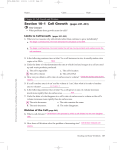
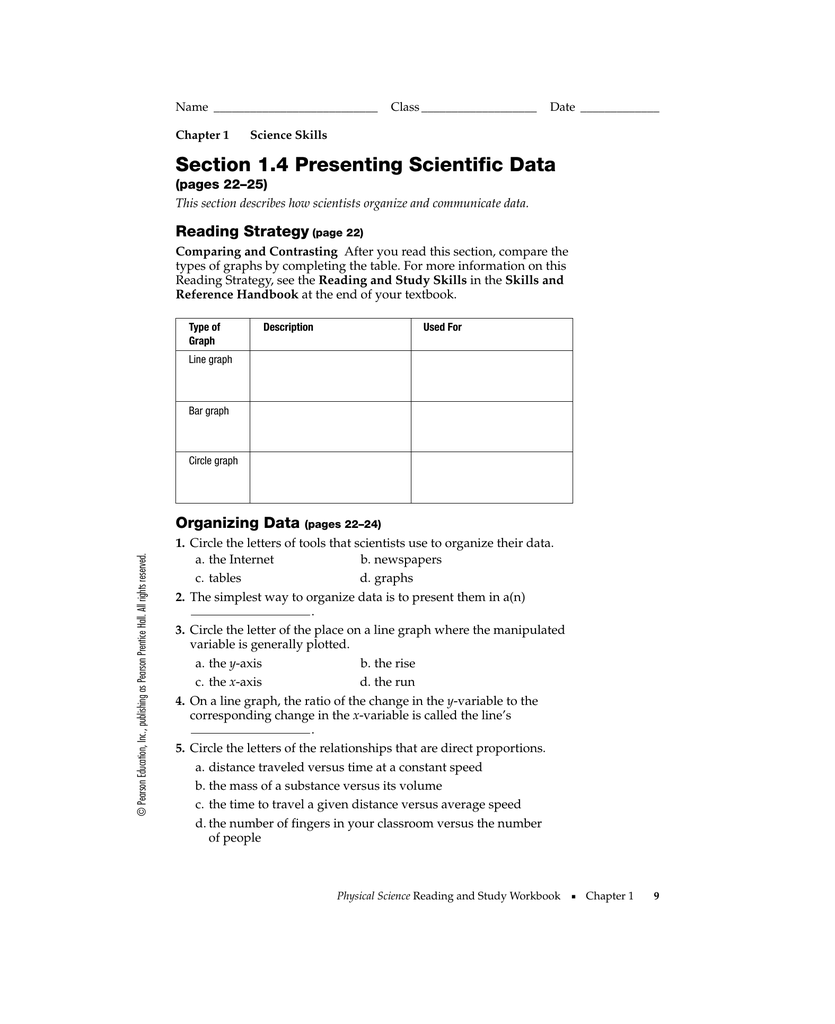

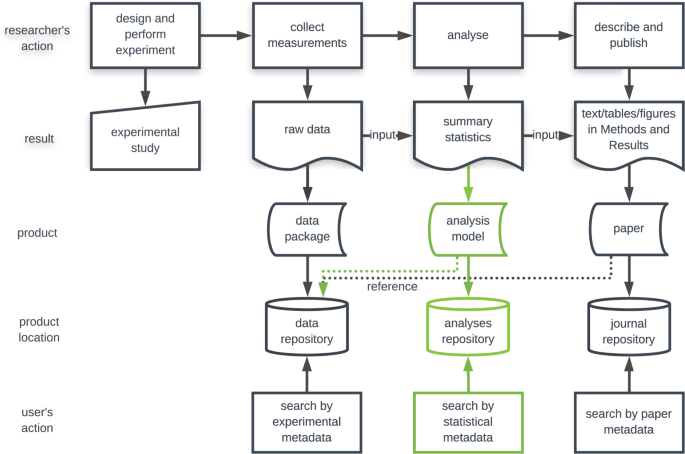
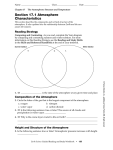





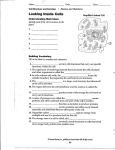


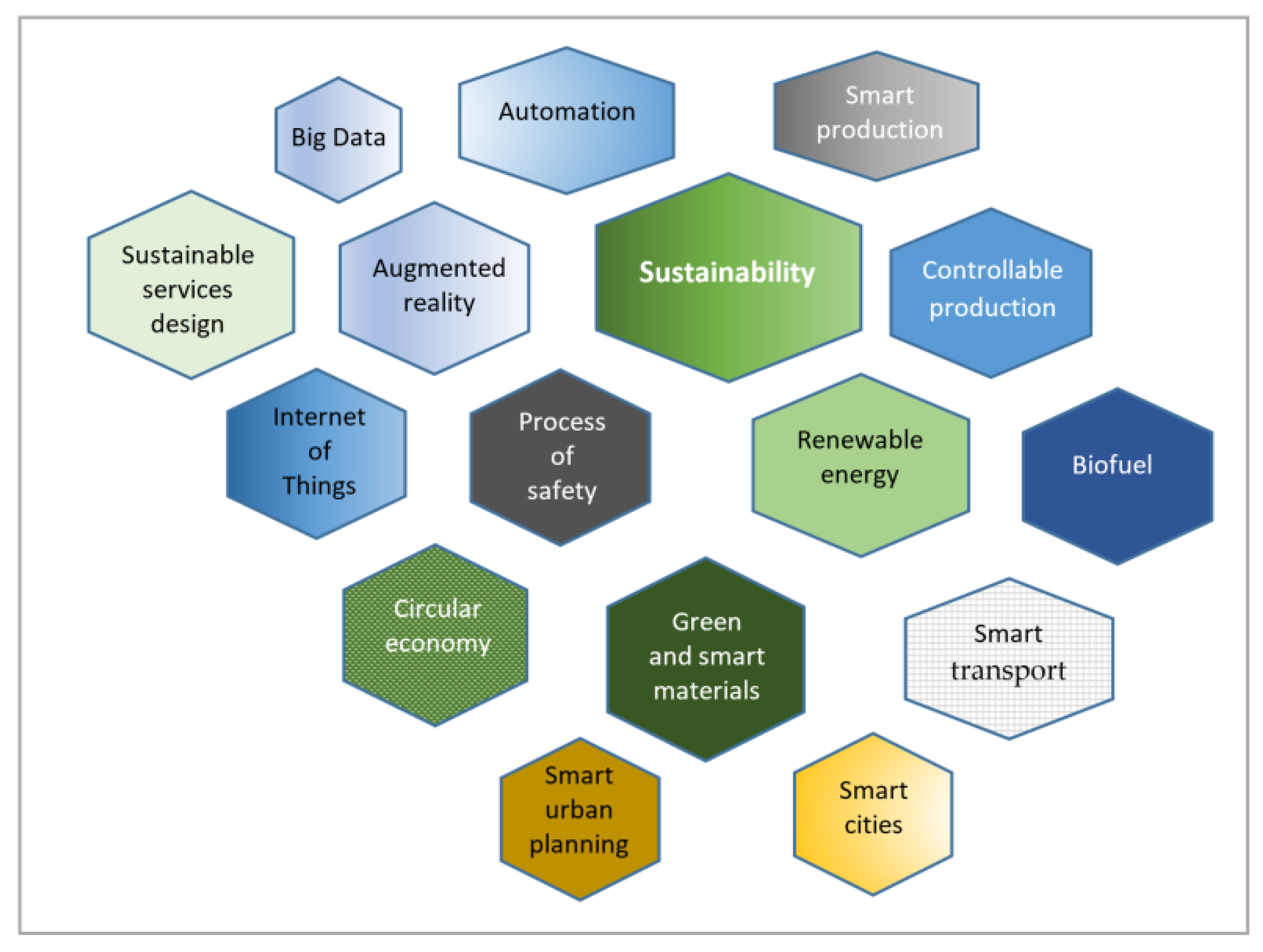


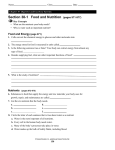


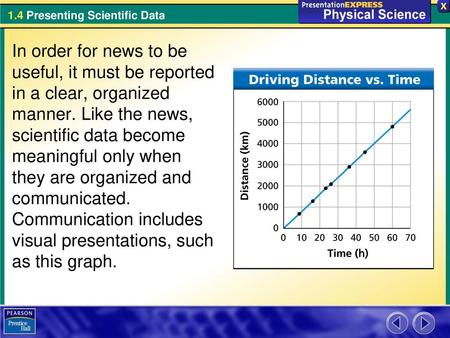
0 Response to "42 section 1.4 presenting scientific data answers"
Post a Comment